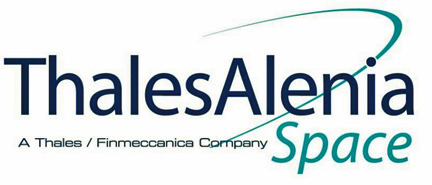
Syrlinks has been selected by Thales Alenia Space to contribute to the design and delivery of the payloads for the future Kinéis constellation smallsats.

These miniaturized payloads will recover the data transmitted from the beacons to the satellites before beaming them back to the ground-based stations. Syrlinks has been selected for proven expertise in space technology the design of methods to reduce system energy consumption.
The company has already been closely involved in this area, having worked as subcontractor of Thales Alenia Space since 2017 on the development of the Argos Néo payload for the demonstration nanosatellite built by the CNES (the French National Center for Space Studies). Syrlinks has now completed the development phase of this demonstration nanosatellite and delivered its flight model. The launch is scheduled for October 2019.

With 25 smallsats in service, Kinéis will operate the first European nanosatellite constellation for IoT. As announced last September, Kinéis has entrusted Thales Alenia Space with the development of the payloads, in partnership with Syrlinks, while Hemeria (a Nexeya corporation) will design and build the smallsats.
Syrlinks teams will develop a data collection instrument for the Kinéis constellation, incorporating highly evolved calculators to process the information collected. Thanks to component miniaturization, the hardware and firmware of the data collection instrument developed by Syrlinks weighs only 2 kg., while performing the same functions as the former generation 18 kg. system. This new equipment will be produced with the brand-new lab instruments and production tools acquired to produce Syrlinks equipment for the OneWeb constellation.
By 2022, Kinéis aims to connect several million objects located anywhere on Earth. Professionals and the general public will have access to a global, easy-to-use and affordable satellite localization and connectivity service. This global coverage is made possible by the coupling of the Argos and AIS systems.
The need to monitor goods and people is increasing and the number of connected objects is growing exponentially, with 30 billion connected objects by 2030. Finding a fishing vessel in distress, locating a lost container, tracking an extreme hiker in the wilderness… Extreme leisure, agriculture, fishing, logistics, yachting and science are all sectors of activity that will be able to rely on Kinéis’ global connectivity services. This new space adventure opens up new development prospects for Syrlinks because its solutions are easily and quickly adaptable to other programs and other uses at competitive prices.
Guy Richard, CEO of Syrlinks, said this new program has allowed the company to expand its range of space radiocommunication products with more advanced features to expand the firm’s range of smallsat products and solutions. This has opened up new international markets for the firm — by entering this complementary space market segment, the company also aims to offer new generation Argos beacons adapted to the constellation.
Jean Loïc Galle, CEO of Thales Alenia Space, added that the company is extremely proud to be able to contribute the firm’s expertise to the development of this structuring project for both Thales Alenia Space, subcontractors and partners. This is the completion of a fruitful collaboration between CLS, Nexeya, Syrlinks and Thales Alenia Space, which has credited an innovating system approach based on a high performance and high reliability nanosatellite constellation.
Christophe Vassal, CEO of CLS, noted that the company is strong contributor to the French excellence in space — with the unshakable support of the CNES and high accounts, the ocmpany will participate in a future round table and have decided to create Kinéis to make accessible, to the greatest number, satellite geolocation and data collection.
For its first space contract, Syrlinks participated in 2012 in the development of the CNES Myriade Evolutions platform’s radio links for Earth Oobservation missions. The popularity of Syrlinks was also based on the Rosetta space mission, initiated by the ESA, aimed at exploring Comet Tchouri. Syrlinks team designed and manufactured the wireless communication systems connecting the Rosetta probe to the Philae robot-lander.

